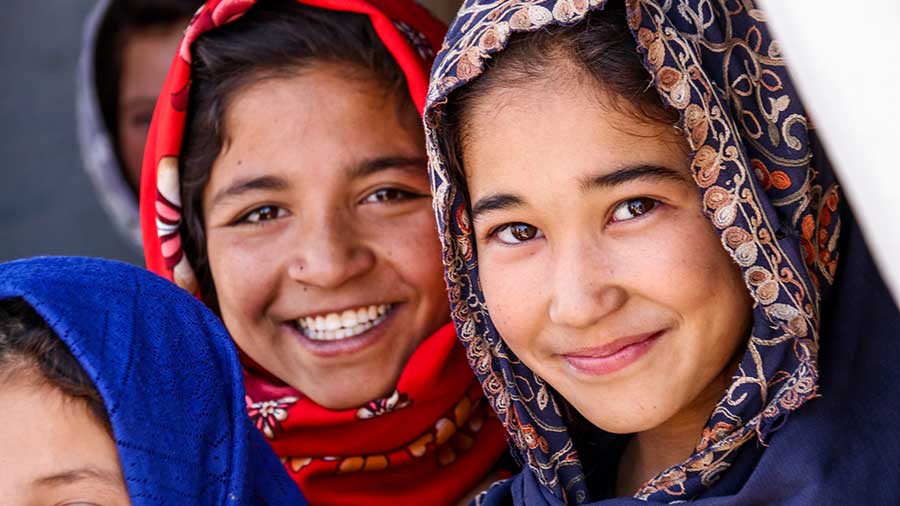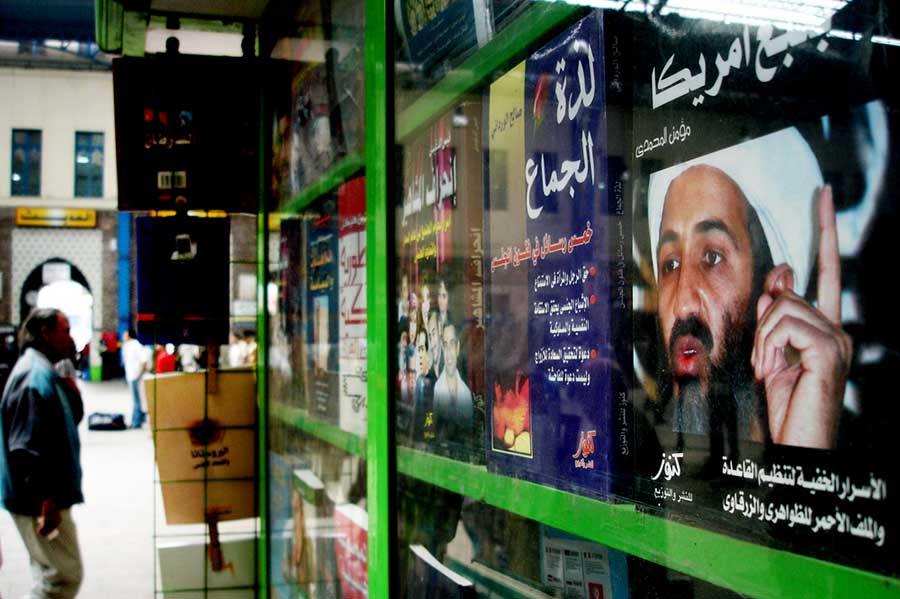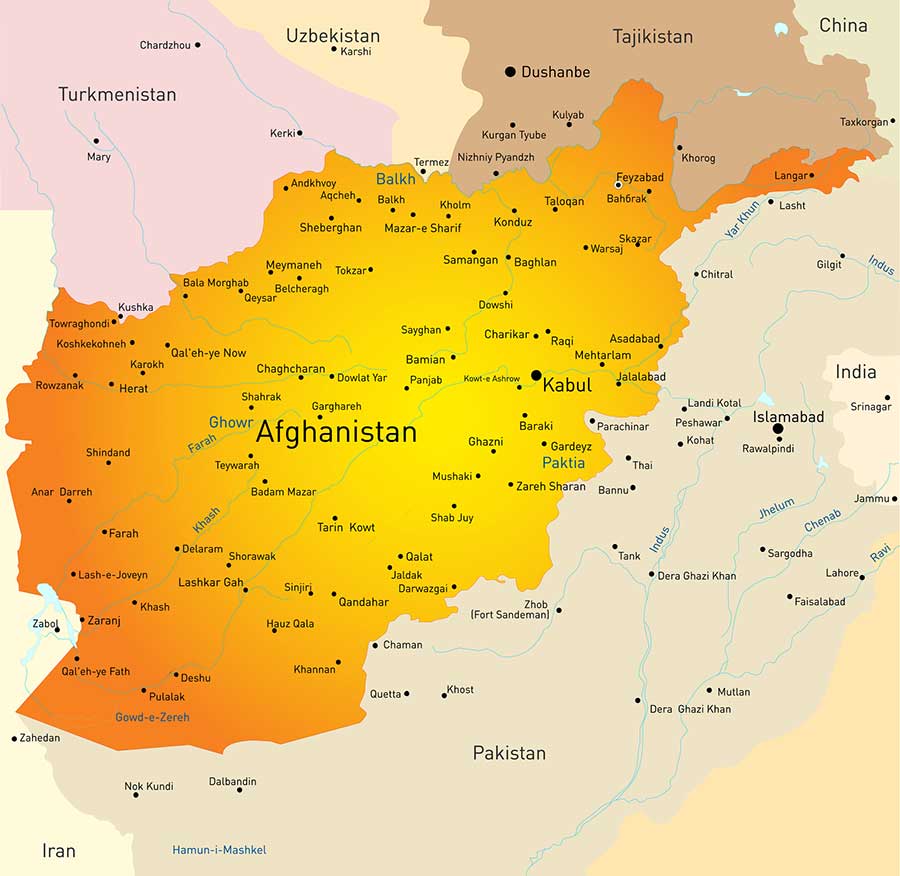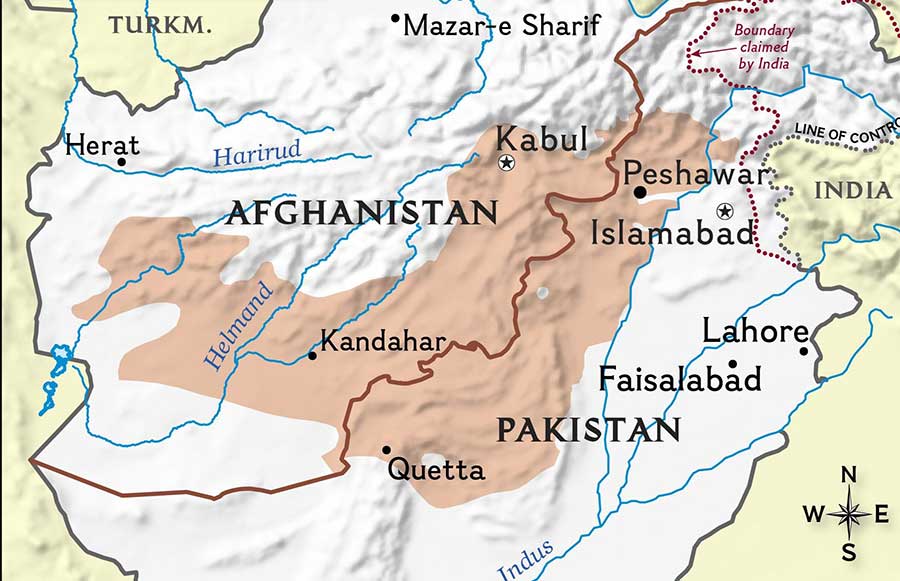The Afghanistan Belt And Road: China’s Opportunity Or A US Exited Death Trap?

Op/Ed by Chris Devonshire-Ellis
Afghanistan is the key to connecting Central & South Asia. Delivering regional peace and trade would be a huge achievement for Beijing
Afghanistan has been much in the news recently as US and NATO soldiers pull out of a war they have been engaged in for 20 years. With the last US military aircraft leaving the strategic Bagram airfield over the weekend, this important base has apparently been overrun and many remaining contents looted. Apparently, no-one from the US side even bothered to tell the local Commanding Officer of their departure. Meanwhile, the Taliban, who the US and NATO were principally engaged in fighting in Afghanistan following the 9-11 attacks masterminded by a long-dead Osama bin-Laden, have stepped up their campaign to take over the country at the expense of the incumbent Government lead by President Ashraf Ghani, a political economist previously with the World Bank and John Hopkins University and now in his second term. That the Taliban, now lead by Hibatullah Akhundzada were originally deposed as Afghanistan’s Government in 2001 and are now seemingly on course to do so again after 20 years of fighting remains an unanswered issue concerning the effectiveness of the US and NATO military operations in the country. Most academics view it almost inevitable that Ghani and the incumbent Government will be forced to flee. Crucially, it was not the Taliban that were involved in the 9-11 atrocities – that was conducted by Al-Qaeda, a different Islamic faction.
Several hundred United States, and some NATO troops, principally from Turkey, will remain behind, ostensibly to ‘protect’ the US Embassy in Kabul and other key properties. Any sorties against the Taliban or other insurgents will be conducted remotely via drone. Meanwhile, it now falls to Russia (for the second time) and now China to fill the security and governmental void. What happens next is key to the security not just of Afghanistan but also the region, and to some extent the US and NATO as well.
While the United States has accused China of leaving BRI debt traps to participating countries, has Washington left Beijing a death trap in the form of Afghanistan?
Who are the Afghanistan Insurgents?
The Taliban
Mostly these are Taliban, known in Afghanistan as the Islamic Emirate of Afghanistan (IEA), a hardline Islamic group who previously ruled most of the country from 1996 to 2001. The Taliban have been condemned internationally for the harsh enforcement of their interpretation of Islamic Sharia law, which has resulted in the brutal treatment of many Afghans. During their incumbency as Government, they were recognized only by Pakistan, Saudi Arabia, and the United Arab Emirates, all of which have been covertly funding the organization.
The Taliban’s ideology has been described as combining an “innovative” form of sharia Islamic law based on Deobandi fundamentalism combined with militant Islam and Pashtun social and cultural norms. Past Deobandi philosophers have discussed the unity of Hindu’s, Christians, and Muslims, in addition to multiculturalism, however since the 1970’s has splintered into various factions – not all are militant and espouse violence. However, many were aligned with expelling the Soviet military out of Afghanistan in the late 1970’s and were provided with US weapons by Washington to weaken and distract the Soviet Union, events which eventually lead to its dissolving in 1992. Much of that weaponry was then used by now battle-hardened Islamic militants against US troops. The main goal of the Taliban has been to govern, while at the same time for much of the past 40 years it has been fighting what essentially amounts to a civil war to do so.
Russian Foreign Minister Sergey Lavrov has stated that to form a working government to Afghanistan, and reach any hope of settlement, the Taliban need to be involved. China takes a similar position, while US President Joe Biden has recently stated “It is time for the Afghans to take responsibility for their own country.”
That said, the Taliban are also at war with other Islamic groups also operating in Afghanistan, including Al-Qaeda and ISIL while also taking on the Afghan Government which it views as a puppet of Washington.

Al-Qaeda
Al-Qaeda ideologues envision the removal of all foreign influences in Muslim countries and believe a Christian-Jewish alliance is conspiring to destroy Islam. It represents a more violent form of Islamic militancy than the Taliban, as being jihadists, they believe that killing civilians and other Muslim sects is religiously sanctioned and wishes to take this fight to other countries. It also wishes to impose strict forms of sharia law. As a result of these doctrines, Al-Qaeda has carried out many attacks on people whom it considers enemies or non-Muslim and is also responsible for instigating sectarian violence among Muslims. Following the death of Osama bin Laden in 2011, Al Qaeda has been led by Egyptian Ayman al-Zawahiri. From 2021 however it has reportedly suffered from a deterioration of central command over its regional operations, which more recently have concentrated on Egypt and African operations. Most Al-Qaeda members are not Afghans.
The Islamic State (ISIL)
ISIL was originally an offshoot of Al-Qaeda, originating in 1999, participating in the Iraqi insurgency following the 2003 invasion of Iraq by the United States and a coalition of Western forces. In June 2014, the group proclaimed itself a global caliphate and began referring to itself as the Islamic State or Daesh. In doing so, it claims religious, political, and military authority over all Muslims worldwide bringing it into conflict with Al-Qaeda and the Taliban. The Islamic State does not generally include Afghans among its soldiers.
There are other, smaller factional groups operational in Afghanistan, although these tend towards smaller, tribal, and occasional Islamic doctrine disputes between hard liners and the more tolerant. Most possess an inherent hatred of the United States in particular, and to a lesser degree Europe, although this can spill over via local communities throughout Eurasia. These, although locally shocking such as incidents across the EU, UK and Russia have tended to be lone wolf attacks from radicalized individuals – something China has attempted to reduce the likelihood of by placing what it regards as the more vulnerable into detainment camps in its Xinjiang Province, which borders Afghanistan. It remains to be seen whether a Taliban Government in Afghanistan would countenance revenge on the United States and its allies for what it views as atrocities committed against Afghans in the country. According to the United Nations ReliefWeb portal, an estimated 40% of all casualties in the period 2016 – 2020 were children. They state: In the period 2016-2020, in Afghanistan, there were 3,977 total civilian casualties from airstrikes: 2,122 civilians killed, 1,855 civilians injured. 1,598 total child casualties from airstrikes: 785 children killed, and 813 children injured. That is a concerning legacy to be leaving behind.

A Regional Security Structure: The Shanghai Cooperation Organisation
Both Russia and China are stepping up to the plate as concerns a new attempt to restructure Afghanistan. Instead of invading and then using bullets and airstrikes to shock and awe locals into a tradition-eschewing democratic structure, easily manipulated by Washington, the Chinese are rather more respectful of the views of Afghan elders – whose wisdom gained at great life experience is greater than that of an 18-year-old who would otherwise under ‘Western democratic values’ have an equal right to vote. The Chinese also respect their elders and operate a partially democratic regime within their party structure made up from the ideals of discussion, research and trial and error. That ideology fits better with the Afghan way of thinking. The Chinese are also careful not to be seen as ‘invaders’ – a line of which stretching back to Alexander the Great and included the British who have long had their noses bloodied by these fierce, proud people.
Militarily, the Russians have been training the Pakistan army as concerns dealing with insurgents, with Islamabad now less interested in conflicts than in creating stability and wealth. Russia also has troops on standby in Afghanistan’s neighboring countries, all members of the Shanghai Cooperation Organisation along with China and whose remit includes regional security. Intelligence and operational activities will be shared among them. That is already happening, with Russia’s Foreign Minister Sergei Lavrov stating that Russia’s military airbase on the Tajikistan border with Afghanistan “will do everything to prevent any aggressive moves against our allies, including using the Russian military base on the border between Tajikistan and Afghanistan. Obligations within the framework of the Collective Security Treaty Organization, (a Eurasian security alliance) remain in full force. Representatives of the organization’s Secretariat visited a section of the Tajik-Afghan border, evaluated the situation, and will report to the permanent council.” Lavrov said that Russian President Vladimir Putin held talks with his counterparts from Tajikistan and Uzbekistan and was in contact with other Central Asian leaders.
Diplomacy & Vested Interests
Both Russia and China’s Foreign Ministers have been busy behind the scenes, meeting with all regional Foreign Ministers and Heads of State and military to prepare for the prospect of securing peace. That includes visits by Wang Yi to the Middle East, the source of much Afghani insurgent funding, where discussions would have taken place about Taliban, ISIL and Al-Qaeda support and the desire that once the US and NATO have left, about how the country and the region may be developed as new emerging Central Asian markets. He also met with the Central Asian counterparts in May. Sergei Lavrov, Russia’s Foreign Minister, has held talks with Pakistan, India and the US Secretary of State Antony Blinken.
The irony remains that the United States has now placed part of its security on the shoulders of the Russians, who will also be keen not to see the Taliban engage in an Al-Qaeda style metamorphosis as previously occurred in 2001. The Moscow Metro was bombed in 2010 by Al Qaeda terrorists; 38 people died in two blasts, 40 minutes apart. Other Al-Qaeda linked events occurred in Volgograd where a suicide bomber killed 50 in a supermarket, while ISIS claimed responsibility for bombings in the St. Petersburg Metro, killing 15 while the same group also blew up an Airbus A321, en route to Pulkovo Airport to Saint Petersburg. All 217 passengers and seven crew members on board were killed.
Both groups (but not the Taliban) have ‘declared war’ on China, and what has often been forgotten in the media coverage of Xinjiang is that some Uyghur separatist movements have been labelled as terrorist groups by the United Nations and the US Department of State. According to the Global Terrorism Database, since 2001, China has had 134 ‘terrorism incidents’ related to Uyghur separatist groups, while 1,458 people have died in incidents mainly in Xinjiang but also taking place in Shijiazhuang, Beijing, Tianjin (an attempted aircraft hijack), Kunming and Guangzhou.
Peace Via Trade: Expanding CPEC Into Afghanistan
China and Russia appear to be on the same page in recognizing the Taliban is essential to securing peace in Afghanistan. That means shoring it up with financing and aid, supporting its right to rule and in doing so, preventing the factionalism that gave birth to Al-Qaeda and ISIL. There are signs that the Taliban are prepared to be reasonable even while placing Afghanistan under some degree of subjugation. There are reports of Afghan military soldiers, part of the Afghan Army, surrendering to the Taliban in recent days, putting down their arms, to be welcomed as ‘brothers’ and told to return home. If so, this will have an impact on uniting a country long torn apart by violence.
The Taliban are also aware that they will need to raise funds to support their rule. This is why the proposed Turkmenistan-Afghanistan-Pakistan-India (TAPI) gas pipeline project is being allowed to proceed – the Taliban can earn legitimate revenues from transit fees. In Afghanistan, TAPI pipeline will be constructed alongside the Kandahar-Herat Highway in western Afghanistan, and then via Quetta and Multan in Pakistan. It is nearly complete, with some delays caused by Taliban fighting US forces. China, meanwhile, perhaps to give it more leverage with the Taliban, has also expressed interest in extending the project through to Xinjiang.
Also mooted has been the Trans-Afghan Railway, designed to connect the markets of landlocked Uzbekistan through to Pakistan’s southern Ports. 573km of that would run through Afghanistan from the Uzbek border at Termez and connect Mazar-e-Sharif, Afghanistan’s fourth largest city, to Kabul and onto Peshawar, there linking with Pakistan’s national rail network. The agreement to do this was signed off by the incumbent Afghan Government, who many expect to fall within weeks and be replaced by a Taliban version. That may require renegotiation, it may not. It remains to be seen who will be in power in Afghanistan and how the Chinese wish to be seen or are prepared to deal with them. To date, Beijing’s contact with the current Afghan Government has been low-key, as dependent upon the United States, Kabul has been wary of encouraging strong China relations. How far that now changes and whether Beijing views the existing Government as too US tainted for peace to be viable is another matter to contend with. It is more likely the Taliban will require unconditional control of the country.
If relations with the Taliban can be fostered, this will almost certainly add some security to Afghanistan. If a Talib government, albeit seen as backward in Western liberal values can be encouraged, and social infrastructure be put in place, then arms may be laid down and the process of rebuilding the country begun. Some logistics viability tests have already begun, with goods already having been successfully transited from Pakistan’s Gwadar Port to Afghanistan. New access corridors are just now starting to open up.

China has apparently drawn up plans to extend the China-Pakistan Economic Corridor (CPEC) into Afghanistan, and Islamabad will be providing glowing references to Kabul to engage. Beijing has apparently offered US$62 billion of infrastructure financing to ensure this happens and to maintain the peace.
This includes the building of a highway between Kabul and Peshawar – the same intended route as the Trans-Afghan railway. China has already been breaking ground on a Special Economic and Development Zone in the region on the Pakistani side – the Rashaki SEZ is designed to service in part local and Afghani markets. If peace can hold, there will be a need for employment of large numbers of well-disciplined men, eager to learn new trades and provide for families instead of being subjected to violence. The Taliban for their part has stated that they will support development projects if they serve Afghan national interests.
Afghanistan would give China and other Central Asian nations a strategic boost as the country is placed as a central hub connecting the Middle East, Central Asia and Europe. With a total population of 32 million, the country is also an attractive market for many, although it will take a carefully managed program to lift the country out of poverty – on-going wars have left Afghanistan 169th from 180 countries on the United Nations human development index.
Bordering Pakistan to the south, Iran to the west, Uzbekistan, Turkmenistan and Tajikistan to the north and northeast, and China to the east, and with planned and existing new BRI road and rail links uniting Central Asia, an Afghani government able to educate and reposition its men to industry and willing to take on trade and investment as an alternative to bullets and bombs certainly has potential. The Central Asian region within Afghanistan’s immediate export reach contains 400 million people.
The Taliban are about to have a second opportunity to govern their country. Russia, the other Central Asian states, and China will all be supportive. Maybe this time, a strict government yet possessing some of the ancient Taliban views as concerns tolerance may be able to deliver. One always must have hope, and with the suppression and fear of invasive US and other foreign troops behind them, perhaps now, alongside China’s Belt and Road Initiative, that potential may finally be realized.
Related Reading
- Pakistan Looking for Huge Increases in Central Asian Trade
- Pakistan Opens Special Economic Zones For Healthcare Manufacturing In North Punjab
About Us
Silk Road Briefing is written by Dezan Shira & Associates. The firm has 28 offices throughout Asia, and assists foreign investors into the region. For strategic advisory and business intelligence issues please contact the firm at silkroad@dezshira.com or visit www.dezshira.com





